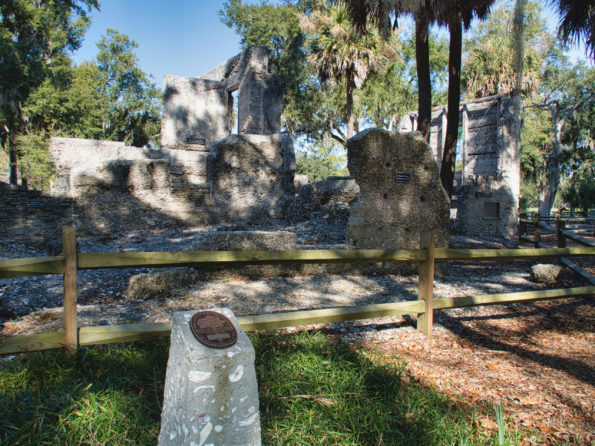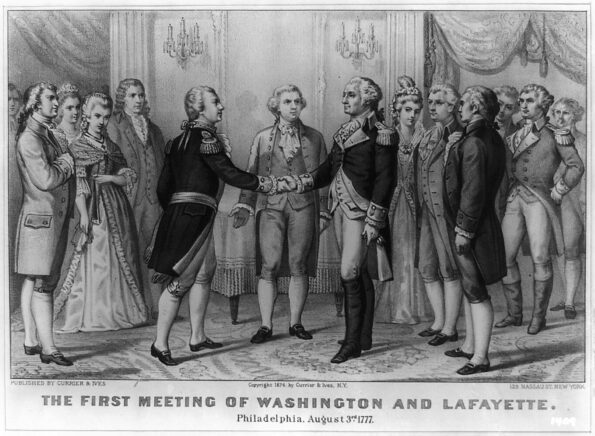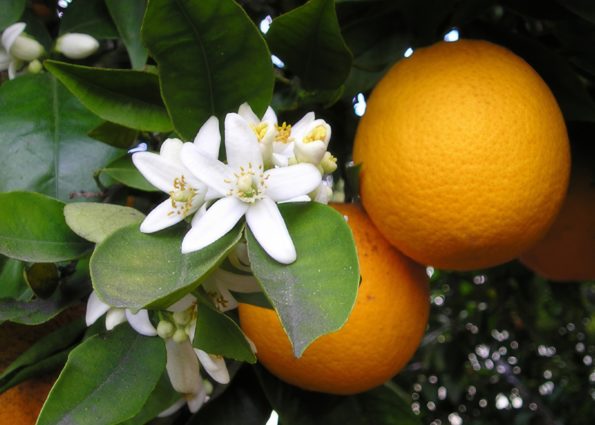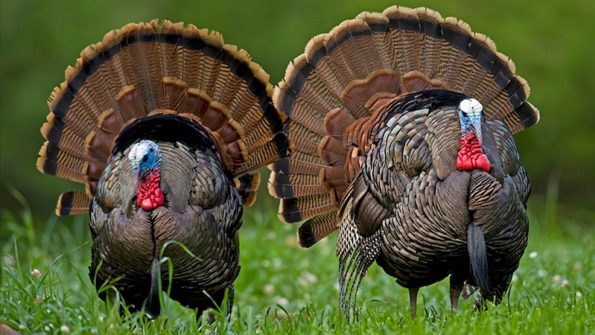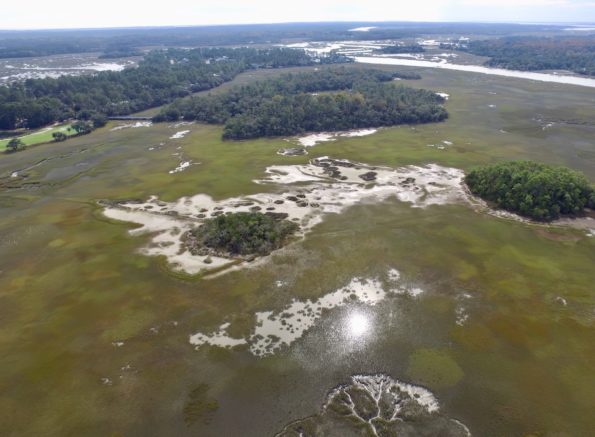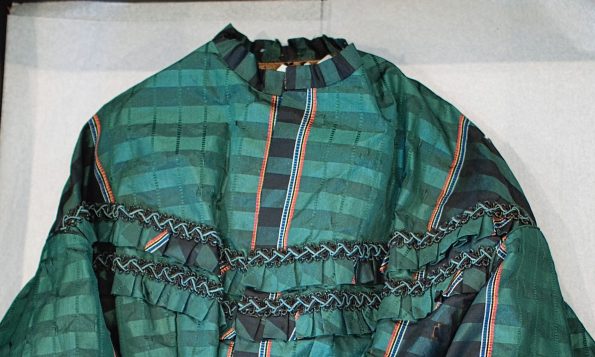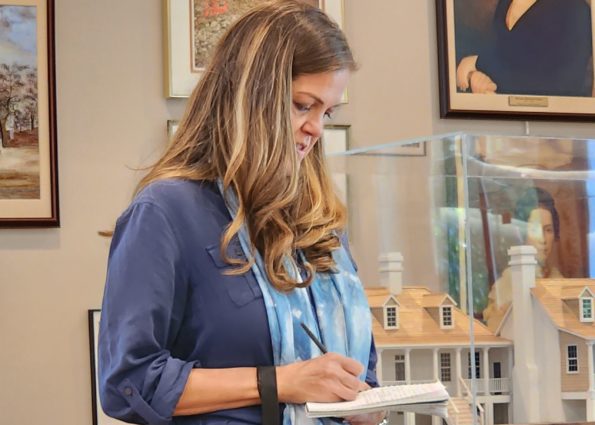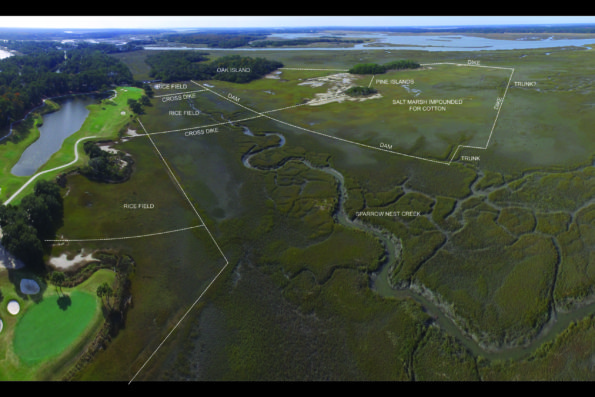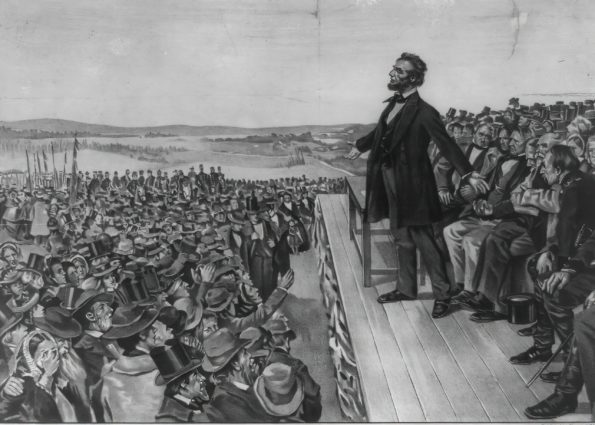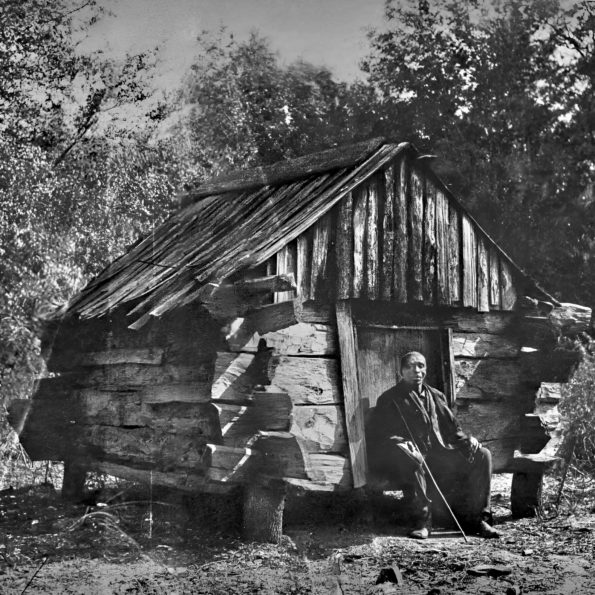William Sams, grandson of Colonel John “Tuscarora Jack” Barnwell, was born in South Carolina on April 18, 1741. With the fall of Charleston and Beaufort during the American Revolution, William was forced to leave his home on Wadmalaw Island and purchased Dataw Island in 1783. At Dataw, he began to grow Sea Island cotton. It was cotton that made the Sams family wealthy and the Beaufort region “the exclusive home of the most exclusive few of that most exclusive aristocracy.”
Articles from this era address the period 1783 to 1865.
Recently, tour requests have begun to pick up. So I thought it would be a good time to introduce you to the winter home of Dr. BB Sams (1787-1855) and his family. Their tripartite house is one of several tabby structures in the Sams Plantation Complex Tabby Ruins, accepted on the National Register of Historic Places on March 4, 2011. In the antebellum period, and the sea islands of Beaufort in particular, nearly all planters had a summer home and winter home. The summer home is where they lived in the hot months to get away from their plantation(s) and the diseases associated with heat, humidity, and bugs. In summer, they went to their homes in Beaufort or St Helenaville. Summer was also the prime time of the year for socializing and for children to be tutored. In winter, the planters lived in their plantation homes. So the ruins you see today on Dataw Island are of Dr. BB Sams winter home and yard.
Historians and archeologists depend on human-made artifacts as clues to understanding and interpreting previous cultures. These historical objects give insight and lend credence to the influence of prior cultures on…
The First Meeting of Lafayette and Washington, Philadelphia, August 3, 1777
Acres of orange groves on Dataw? Was this one of the earliest commercially produced oranges in the United States?
It’s fascinating to trace the wild turkey’s journey from being domesticated by Native Americans a thousand years ago to its role in the antebellum era at Elizabeth and Berners Barnwell…
This Spring issue includes three compelling articles: one about the economic significance of Sea Island Cotton in the Lowcountry during the early 19th century and expansion attempts into the marshes,…
Oak Island is a 32-acre natural beauty sitting next door to Dataw Island. Native Americans frequented the island about 1,000 years ago. Fast forward 800 years to the BB Sams / LR Sams plantation era, and it was an adventure spot for James Julius Sams and his brothers Horace and Donald. As Sea Island cotton took off as the “finest in the world,” BB Sams decided to build a system of dikes between Dataw Island, Oak Island, and the two marsh hummocks to the north (i.e., Pine Islands).
This week’s theme is HEIRLOOMS. The Dataw Historic Foundation is fortunate because the Sams descendants have entrusted us with several family heirlooms. This week features the story of two other items donated to the Foundation, a green silk taffeta Victorian gown and a shawl circa 1860. Ginny Hall-Apicella and BIll Riski recently presented the history of the dress to our Dataw Island residents.
The Event Natasha Boyd, the author of Indigo Girl, was the guest speaker at the Dataw Historic Foundation Author’s Luncheon in early April organized by Rosemary Patterson, DHF Publicity…
The Dataw Historic Foundation engaged Colin Brooker (Brooker Architectural Design Consultants) and Benjie Morillo (Frederick and Frederick Architects) to conduct a drone survey of historic features around Datha Island, particularly…
Thursday, November 19, 1863, at about 3 PM, as the sun broke through the clouds, President Abraham Lincoln gave his two-minute address to the 15,000 gathered for the dedication of the National Cemetery at Gettysburg, PA. We’ve all read it, studied it, and seen it (on the wall at the Lincoln Memorial in Washington D.C.) I’m going to discuss the Gettysburg Address in a moment. The most interesting part of his speech is often skimmed over, “..of the people, by the people, and for the people..” First, I thought a summary of the Sams family members who served in the Confederate States of America army would provide some interesting context for you.
This photo is of Brutus on Palawana Island, SC, circa early 1900s. The image is from Face of an Island: Leigh Richmond Miner’s Photographs of Saint Helena Island, compilation by…


